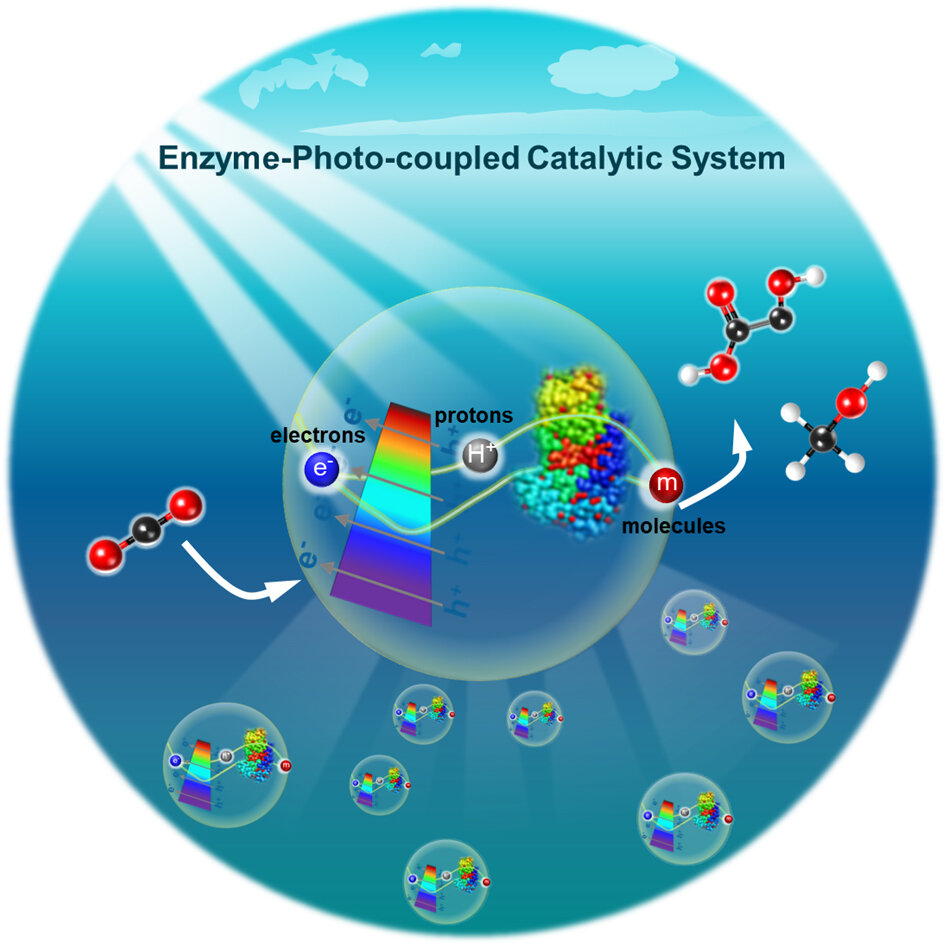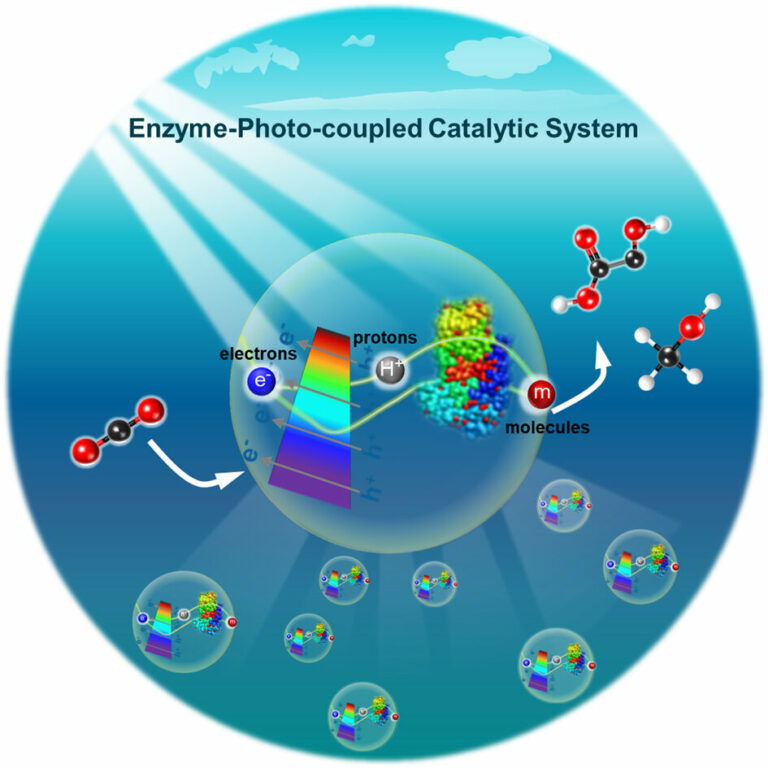Transfer of Molecules, Electrons, and Protons in an Enzyme-Photo-Coupled Catalytic System.
The rapid advancement of advanced manufacturing has been spurred by the harmonious coexistence between human society and nature. Green biomanufacturing, particularly the use of renewable resources and enzymes or microorganisms as catalysts, aligns well with the principles of green chemistry. Enzyme-based green biomanufacturing has found extensive applications in various industrial sectors such as food, pharmaceuticals, and chemicals.
Enzyme-based biomanufacturing processes commonly employ reduction reactions. However, the use of fossil energy in these processes not only increases production costs but also leads to the generation of difficult-to-separate oxidation by-products. To achieve sustainable green biomanufacturing, it is crucial to explore the use of affordable and renewable energy sources, such as solar energy, to facilitate sufficient reduction reactions.
Natural photosynthesis serves as an ideal inspiration for green biomanufacturing. During photosynthesis, green plants utilize sunlight to split water into oxygen, electrons, and protons. These electrons and protons are then utilized to drive the synthesis of energy-rich biological reductants like NADPH and ATP, which are further involved in the Calvin-Benson cycle for CO2 fixation.
One promising approach for solar-driven biomanufacturing is the enzyme-photo-coupled catalytic system (EPCS). This system mimics natural photosynthesis by utilizing photocatalysts to capture solar energy and drive enzyme catalysis for the production of various chemicals. However, the solar-to-chemical conversion efficiency of EPCS is currently below the theoretical upper limit observed in nature’s photosynthesis. Conventional EPCS research has primarily focused on the development of photocatalysts or the matching of photocatalysts and enzymes, without providing comprehensive guidelines for the construction of EPCS from the perspective of molecule-electron-proton transfer.

Prof. Zhongyi Jiang from Tianjin University, China, and his research team have recently proposed a novel approach to enhance the coupling between mass and energy in EPCS (Electrochemical Photocatalytic System). This is achieved through the coordination and optimization of the “new three transfers” – molecule, electron, and proton transfer. By doing so, the solar-to-chemical conversion efficiency is significantly improved. The team draws inspiration from natural photosynthesis, which exhibits a well-matched molecule-electron-proton transfer. This serves as a valuable model to understand the phenomenon in EPCS.
The findings of this study have been published in the Chinese Journal of Catalysis. The objective of the research is to transfer the molecule-electron-proton transfer mechanism from natural photosynthesis to EPCS. Furthermore, the review also addresses the current challenges and status of achieving synergistic intensification of all three transfers in EPCS. The researchers also provide valuable perspectives on the future research and development of EPCS.
This article is republished from PhysORG under a Creative Commons license. Read the original article.
Do not forget to share your opinion with us to provide you with the best posts !




0 Comments